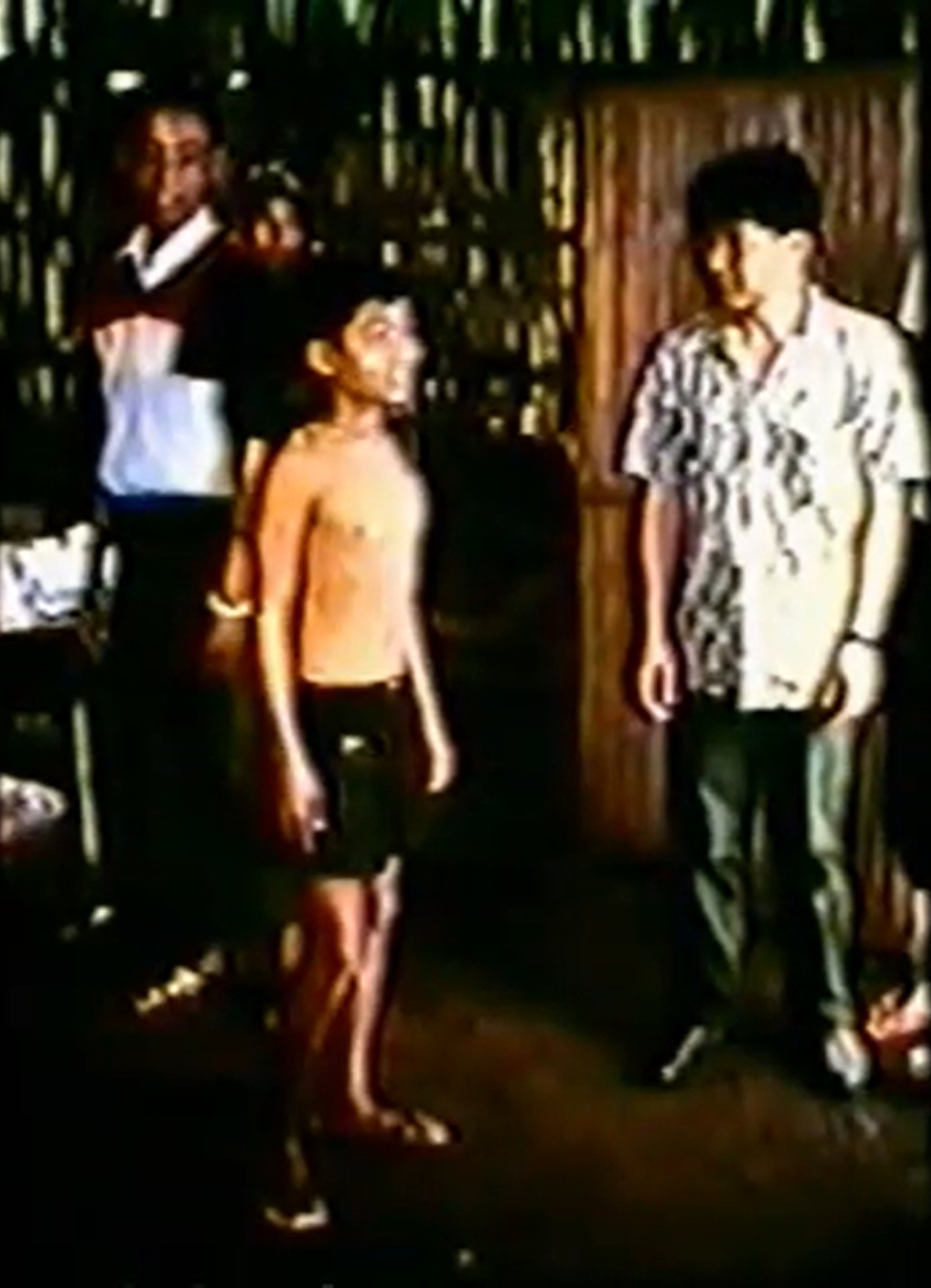|
How We Met Aung Myo Min
 |
|
| Aung Myo Min, Shan Lay, and the youngest member of ABSDF |
|
|
|
In 1989, ABSDF invited us to visit their camp in the Mon liberated area beyond Sangklaburi, and we made our first trip on the border with Shan Lay, Thiri Nyunt, and Aung Naing Oo. We left Bangkok by van, also accompanied by two foreign monks who wanted to see the situation for themselves. It was the middle of the rainy season, so we had to walk the last kilometer to the camp, but, on the way, every student we encountered, without hesitation, knelt in the mud to pay respect to the monks. We were deeply impressed by the students' spirit and their organization. We learned that almost all of them had suffered from malaria and saw a few black water fever patients getting IV drip in the little hospital. Mosquitoes were kept at bay by smoky fires in the aisles of the leaf-roofed dormitories. We were touched by the little library where a few treasured books were arranged on bamboo shelves. We were introduced to the youngest ABSDF member, who was only 12, and met Aung Myo Min, who continues to work for democracy and human rights even now.
We had heard that there was a monastery of All Burma Young Monks Union nearby, and Shan Lay offered to take us there. We had visited that organization in Mandalay and had donated printer's ink for their underground newspaper.
As we waded through the mud, Shan Lay repeatedly assured us that it was "only five minutes more," even after we had been walking for an hour. Finally, he admitted that it might be better to proceed by vehicle and disappeared. We continued trudging along until he returned with an ox-cart and driver. It was a bumpy ride, but we were grateful to be out of the ankle-deep muck. The monastery was simple, but the ABYMU monks were very pleased to meet the foreign monks, and they made us feel very welcome.
Not many months later, conflict erupted between the Mon and Karen forces, and that patch of liberated area was overrun by the Burmese military. Once again, the old technique of divide and conquer worked in the junta’s favor. The students lost their camp, and the monks lost their monastery, but we never forgot the hand-lettered sign which proclaimed, "Long Live Holiness."
In 2008, Aung Myo Min joined us in Kolkata, and gave human rights training to the students attending Buddhist Relief Mission's Intensive Course at Bodhisukha Monastery and School.
That was the last time we met him although we've communicated informally as we followed his work over the years with great respect and deep affection.
After the February 1st coup, we despaired of Burma's future until we saw that Ko Aung Myo Min had been appointed Minister of Human Rights for the National Unity Government. If enough Generation Z young people in Burma can remain as committed, earnest, and true as he has been all these years, there is indeed real hope!
|
|
|